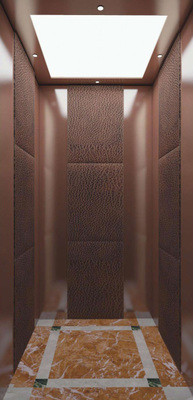Categories
Tags
-
#Passenger Elevator Factory
#villa elevator
#Observation Elevators
#bed elevator
#escalator
#freight lift manufacturers
#hydraulic elevator
#ecalator supplier
#lifting platform
#villa elevators
#passenger elevators
#car elevator
#passenger elevator
#elevator lift factory
#hydraulic freight elevator
#hospital elevator
#household elevators
Archives
The importance of bed elevator in residence
-
At present, limited by land resources, the proportion of high-rise residential buildings in cities will become higher and higher, and the importance of elevator supplier configuration in residential performance has become increasingly prominent. How to transfer the sudden high-risk patients in high-rise residential buildings, and the elderly patients with weak physique, can safely and quickly transfer from the upstairs to the downstairs ambulance when they become ill. This is a key issue that needs to be solved at this stage.
The degree of aging in China is getting higher and higher. An old-age care system based on home care, based on community home care, and supplemented by institutional care is gradually established and recognized by the whole society, which is also suitable for the development needs of my country's national conditions. As the pace of urbanization continues to accelerate, the people's living standards and the general improvement of medical and health care are bound to put forward higher requirements on urban residential infrastructure.
The survey found that the width and depth of ordinary elevator cars in China are currently about 1.6 meters. Due to the limitations of rated load, car size, and hoistway size, it cannot accommodate the conventional stretcher of 120 emergency centers over 1.9 meters, even if the smallest length is 1.78 The shovel stretcher of meters can not be put into the car. This caused an embarrassing situation in which the ambulance was waiting downstairs and the patient could not get off, which seriously affected the precious pre-hospital rescue time of emergency patients. In addition, when transporting patients with fractures, bleeding, etc. during emergency treatment, they cannot be moved casually. If they are moved at this time, the vibration is likely to aggravate the condition and cause secondary injuries. It is not optimistic to achieve the goal of "convenient medical care".
The newly issued residential design code stipulates that for residential buildings with twelve floors and above, no less than two elevators should be installed in each building, and one bed elevator should be installed.
However, because the configuration of bed elevators in high-rise buildings is a non-administrative approval requirement, the choice of bed elevator configurations in high-rise residential buildings has greater selectivity. There are more and more requirements for small-sized residences. After residential bed elevator are installed, the area of public transportation will increase, which will inevitably reduce the indoor area of residences and affect the design of residential units.

